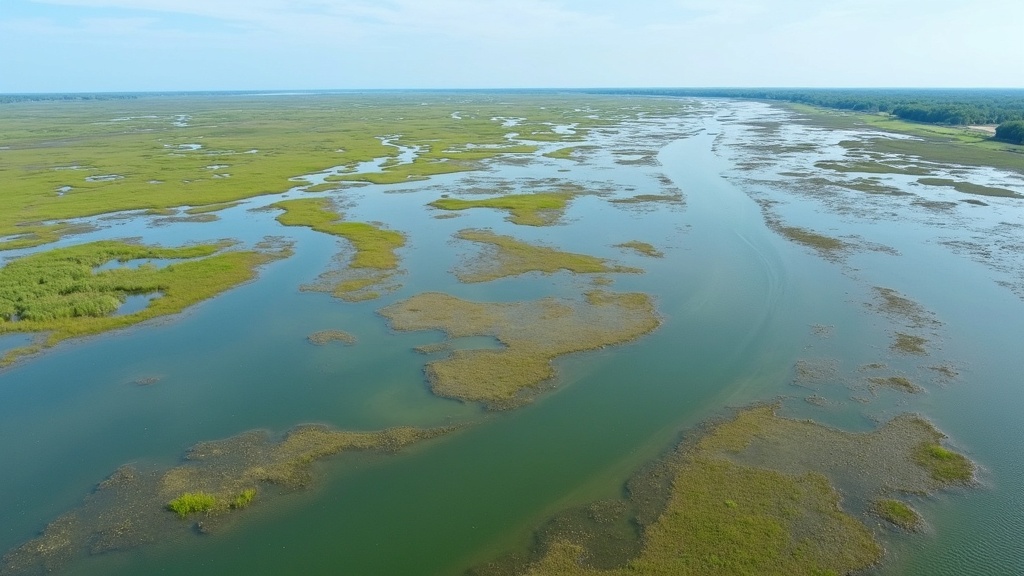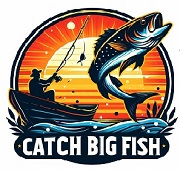Of all the Southern Coastal game fish, I like Redfish the best because they taste so good and Florida allows open season all year, and I can keep 1 daily if I want. The rules for Snook on the other hand are more severe. To keep a Snook you must obtain a Snook Tag for a price and there are closed seasons. Snook do give the best fight though. Hmmm, I guess I let my stomach do the talking for this intro.
In order to locate and catch Redfish, it’s a good idea to understand their habitat and their movements and their feeding behaviors. I think you will find this information useful and increase your success catching Redfish.
Bon Appetit !
Redfish, also called red drum, are a favorite species among those of us that love backwater fishing. Not only are they strong fighters, but they also have an interesting connection with their habitat. Knowing where redfish can be found throughout the year, and how their locations switch up with changing tides and seasons, is super useful for anyone hoping to spot or catch them. Let’s break down exactly where redfish like to spend their time, and why their range isn’t as static as you might think.

Aerial view of a coastal estuary with clear shallow waters and grassy marshes. Perfect for Redfish Habitat.
Understanding the Redfish Habitat Range
Redfish have a wide distribution along the Atlantic and Gulf coasts of the United States. They thrive in a mix of fresh and saltwater environments, mostly sticking to the shallow coastal regions. Their range runs from Massachusetts all the way down to Florida and then west through the Gulf of Mexico to northern Mexico. This stretch of coastline offers the ideal conditions redfish need to hunt, spawn, and cruise.
The main reason redfish settle into these habitats is because of the abundance of food and the shelter provided by marshes, grass flats, oyster reefs, and mangroves. These places help redfish avoid predators and also give them plenty of opportunities to hunt crabs, shrimp, baitfish, and other tasty snacks. Juvenile redfish usually stay in calm estuaries, while mature adults sometimes move into open waters.
Redfish also have some fascinating adaptations that help them survive in ever-changing environments. For example, their ability to feed both during the day and night, and their preference for waters of medium salinity, allow them to stay a step ahead of both predators and fishing pressure. These fish thrive in environments where river water mixes with ocean tides, enabling them to take advantage of a diverse menu and safe hiding places.
The Core Redfish Range in North America
Along the eastern seaboard, the highest concentrations of redfish are found in South Carolina, North Carolina, Georgia, Florida, and the northern Gulf states like Louisiana and Texas. Here are some of their popular hangouts:
- Estuaries and Bays: Shallow, brackish water gives both food and shelter.
- Salt Marshes and Mangroves: Dense cover and plentiful prey make these areas redfish hotspots.
- Grass Flats: Seagrass beds matter for juvenile redfish and offer awesome foraging opportunities.
- Oyster Reefs: Oyster mounds provide food for prey so redfish can find an easy meal.
- Coastal Rivers: During periods of higher freshwater flow, redfish may move far upstream.
These environments let redfish dodge predators while chasing down bait. Not every stretch of coastline is created equally, though. Where redfish concentrate the most depends heavily on local water conditions like salinity, temperature, and the overall health of the ecosystem.
How Redfish Location Changes with the Tide

Redfish use tides to their advantage much more than many other fish. Their exact location can change totally within just a few hours due to tidal movements. Here’s how the tide usually affects where redfish hang out:
- Incoming Tide: As the tide rises, redfish move onto shallow flats, grassy shorelines, and flooded marshes. This gives them access to shrimp and crabs that get stirred up by the rising water. Redfish are more active and will push right to the edge of the grass or even into areas that were mud just minutes earlier. Watching for “tailing”—where you see their tails above water as they root for food—is a sure sign they’ve followed the tide up.
- High Tide: Redfish spread out across these recently flooded spots, hunting in grass edges, mangrove pockets, and other overhanging structures. They’ll slip under branches and submerged debris, using breaks from the current as ambush sites.
- Falling Tide: As water drains back, redfish pull off the flats and gather near sloughs, channels, and creek mouths. They wait for small baitfish and crabs to get swept out, making for quick meals. Deeper troughs, along the edges and drop-offs. become prime spots to find them sitting tight.
- Low Tide: With water at its lowest, redfish stick to deeper holes, troughs, and channels. They’re less spread out and easier to spot, especially if you’re willing to wade or cast into tight pockets. Low tide is great for sight fishing since you can visually spot schools as the water gets clearer.
Tides basically set the daily schedule for redfish. If you want to maximize encounters—whether fishing, taking photos, or just watching—staying on top of the tide chart is essential.
Seasonal Habits and Migration Patterns
The time of year seriously affects where you can find redfish. Their range doesn’t just move daily with the tide—it shifts season by season. Knowing their yearly patterns can make the difference between a slow day and a great one.
- Spring: As waters warm up, redfish move out of deep winter holes onto flats and marsh edges. Spring brings a surge of baitfish and shrimp, so redfish are active and hungry. Juveniles favor shallower spots, while larger adults start grouping into bigger schools.
- Summer: In the heat, redfish stick to shallow flats early and late, but retreat to deeper, cooler water midday. Marshes, inlets, and grassy edges all produce fish. Small redfish stay put, while bigger breeders move closer to open water, especially by inlets or river mouths.
- Fall: This is “bull red” season in many places, especially Louisiana and the Texas coast. Big mature fish gather in large schools and move from inshore waters to surf zones and passes to spawn. In the fall, bait runs flush mullet and shrimp out of the marsh, sparking a feeding frenzy and aggressive redfish activity.
- Winter: As things cool down, redfish search for deeper, more stable temperatures. Holes, channels, and deep ponds in marshes are preferred. Redfish bunch up during winter, so finding one means more are likely nearby. They still move onto sunny flats on warm afternoons but eat more selectively.
These seasonal shifts aren’t just about temperature. They’re tied to food availability, avoiding predators, and finding good water quality. Some years, major storms, increased rainfall, or sudden cold snaps can totally change what you’d expect, which is why paying attention to local conditions matters so much.
Popular Redfish Environments: Real-World Examples
Some coastal areas are famous for their redfish abundance and action. Here’s how redfish make the most of a few legendary habitats:
- Louisiana Marsh: The endless mix of grass, ponds, and bays along the Louisiana coast forms vast year-round feeding grounds. Tides keep fish on the move, offering tons of ambush points. Wading anglers regularly spot tailing fish in inches of water when the tide is rising.
- Texas Flats: From Port O’Connor to Laguna Madre, Texas has broad grassy flats and oyster shoals where redfish roam with the tides, sometimes chasing huge schools of shrimp or mullet. Incoming tides bring feeding groups right to the grassy edge.
- Florida Estuaries: Indian River Lagoon and Mosquito Lagoon on Florida’s east coast, along with Tampa Bay and the Everglades to the west, support sizable numbers of redfish. Mangroves, oyster bars, and a steady supply of forage guarantee action, especially early in the morning during hot months.
Local guides and seasoned anglers keep close tabs on how individual creeks, ponds, or reefs perform at different times and in various seasons. Studying these trends lets you adjust tactics and locations for the most active redfish in your area.
Challenges Impacting Redfish Habitat
Redfish are tough, but their habitats can run into trouble. Coastal development, pollution, storms, and loss of wetlands all threaten the delicate estuary balance. When marshes get drained or oyster beds are destroyed, redfish lose crucial feeding and spawning sites. Fisheries managers try to protect these vital places using catch limits or designated zones to prevent overfishing.
Environmental changes also play a big part. Strong hurricanes or harsh cold snaps might force redfish to switch spots or change their routines. Sometimes, a big storm will even push nutrients—or fish—way inland or far offshore, shaking up regular hot spots for weeks or even months. Staying flexible and willing to scout new locations is important, especially in the wake of severe weather.
Tips for Locating Redfish in Their Range
If you want to spot or target redfish, your odds go up if you keep both the tide and the season in mind. I always check the tide, especially if I’m fishing the flats at low water or heading into the marsh when the tide is high. Before spending time in an area, look for signs of other life … watching for movement, detecting nervous baitfish, and noticing birds feeding on the surface can all tip you off. Because Redfish will also not waste their time feeding where there is no prey.
- Tune In to the Tides: Plan your trip just before high tide or at the start of outgoing tide, when the fish are usually most active… 2 hours before and after high or low tide is a good rule to follow.
- Match the Season: Fish deeper holes in Winter. Fish do not tolerate temperature extremes, whether hot or cold. The deeper water protects them from the low overnight temperatures. On days when the sun is out, Redfish may migrate to the flats that are warming in the sun… especially over mud flats that tend to hold the heat better. During the Summer, head to the flats at sunrise or sunset for the best action.
- Read the Water: Pay attention to water clarity, currents, visible bait, and even subtle temperature edges to clue in your next spot.
Chatting with local anglers or reading area reports can also help you track down hot bites. Take notes on conditions and trends, so you’re ready to find redfish when the setup looks familiar again later in the year. Remember, staying observant pays off over time.
Frequently Asked Questions
Where do redfish live most of the year?
Most redfish hang out in shallow coastal areas year-round, moving between marshes, bays, and flats based on water temperature and available food.
How far do redfish travel?
Redfish can cover several miles in a day, especially for spawning or during significant seasonal changes. While not famous for long migrations, they do make frequent moves between local habitats.
How important are tides for finding redfish?
Tides are extremely important. They decide where redfish can feed, hide, or move. Planning around tides will give you much better odds of seeing or catching active fish.
Do redfish ever leave the coast?
Mature redfish, especially large
I hope you enjoyed this article and catch more fish because of it.
Tight lines!
John
